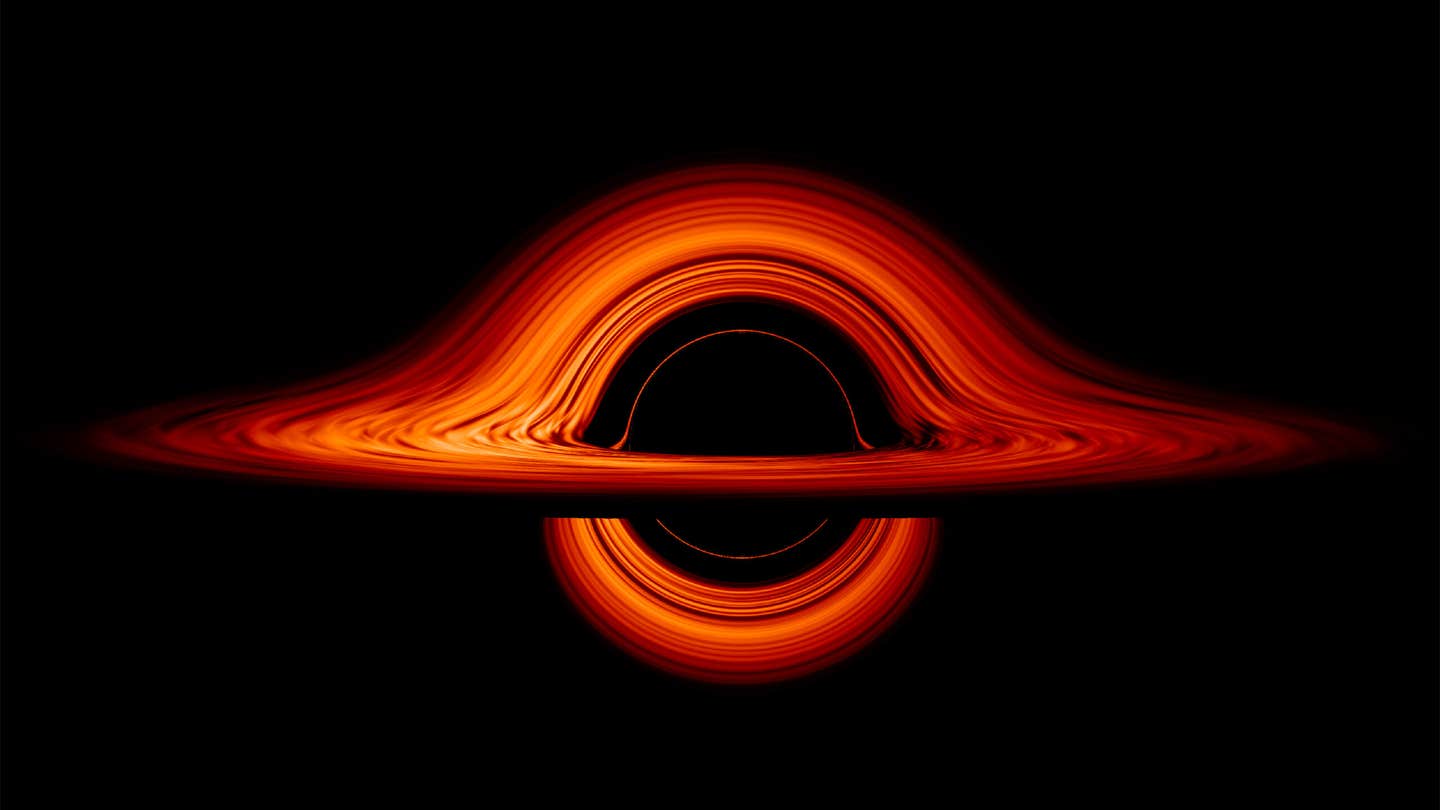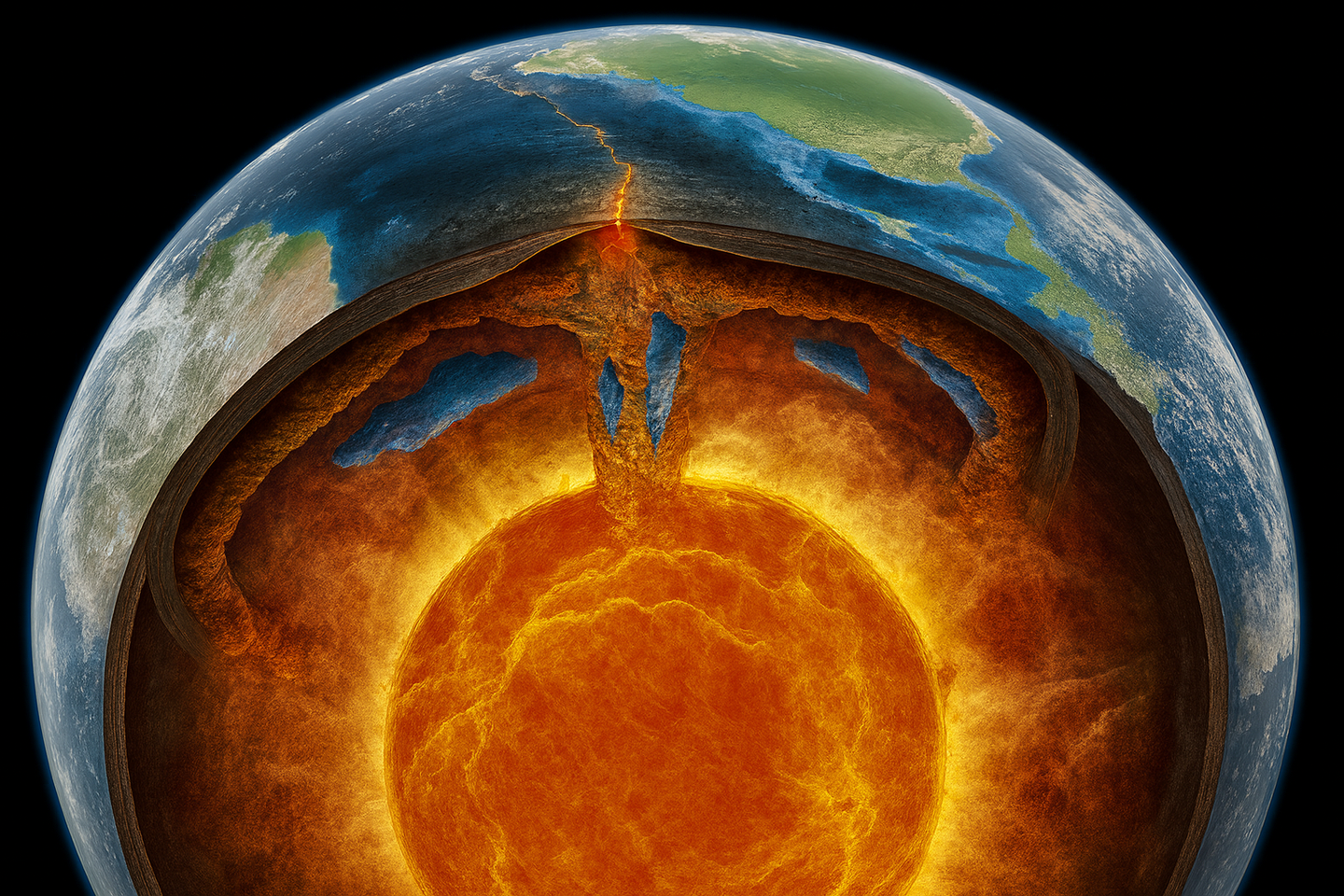Black holes don’t behave as we thought, study finds
A new study using the Event Horizon Telescope finds that black hole jets speed up as they move away, defying long-held ideas.

New EHT study shows black hole jets speed up as they move outward, challenging old theories. (CREDIT: NASA)
In 2017, a network of radio telescopes around the world joined forces for an ambitious goal: to study the mysteries of black holes and the powerful jets they unleash. This project, called the Event Horizon Telescope (EHT), offered an extraordinary level of detail by combining observations from different places to create a telescope as big as Earth itself.
The EHT's first major observing campaign revealed images of eighteen distant cosmic objects. Among them were two famous supermassive black holes—Sagittarius A and M87—and sixteen active galactic nuclei, or AGN. These AGN are the bright centers of galaxies powered by supermassive black holes that blast out powerful jets of particles at nearly the speed of light.
Thanks to the sharpness of the EHT's vision, scientists were able to look closer to the center of these cosmic jets than ever before. The goal was to explore how jets form and evolve, and how magnetic energy drives them away from the black hole’s grasp.
Probing Jets at the Edge of a Black Hole
The study focused on key features of the AGN jets such as their size, brightness, and energy. These features help scientists understand what’s happening deep inside the jet. One of the most important measurements they took is called brightness temperature. This shows how intense the radiation is from the jet as it moves away from the black hole.
An international team led by Jan Röder, working with two research centers in Germany and Spain, used data from the EHT along with earlier observations from other telescope arrays. These included the Very Long Baseline Array and the Global Millimeter VLBI Array, which can view parts of the jets much farther from the black hole.
By combining all of these views, researchers got a fuller picture of how the jets grow and change as they stretch out across space. Röder explained, “Our findings challenge long-standing assumptions about how jets behave. By analyzing a sample of sixteen active galactic nuclei, we were able to reduce the influence of individual peculiarities and obtain a broader picture of jet behavior.”
Related Stories
More Than Just Straight and Steady
The traditional view of a jet suggests it behaves like a simple cone. Plasma, a kind of energetic gas, rushes out from the black hole at a steady speed. As the jet travels farther, the magnetic field weakens, and the density of particles thins out. Based on this simple model, scientists can make predictions about how bright and big the jets should look at different distances. But that’s not what the EHT data showed.
"This basic model cannot be a perfect description for all jets—most likely, only for a small fraction,” said Röder. “The dynamics and sub-structure of jets are intricate, and observational results can suffer greatly from astrophysical degeneracies.”
This means that while the model might work in theory, reality is far messier. Sometimes, jets appear to speed up. That could be because the particles really are accelerating. But sometimes it’s just a trick of perspective. If the jet bends and points more directly toward Earth, it can seem like it’s moving faster than it actually is.
Another clue came from measuring the brightness temperature. In most cases, this brightness increased as the jet moved away from the black hole. That runs against what the standard model says should happen.
Maciek Wielgus, another lead scientist on the study, explained, “Using a sample of sixteen active galactic nuclei, we were able to get a broader picture of the behavior of jets, compared to just looking at individual sources. This way, the results are less prone to influence from their respective unique properties.”
In other words, looking at a bigger group of jets made it easier to spot patterns and figure out what’s really going on, rather than getting confused by odd examples.
Filling in the Missing Middle
While the EHT gives extremely detailed images near the black hole, and older arrays show the jets farther out, there was still a gap in between. Eduardo Ros, who coordinates telescope time for the Global Millimeter VLBI Array, pointed out how important it is to connect these observations.
“The Global Millimeter VLBI Array operating at 3.5 mm wavelength provides the key information between the highest resolutions achieved by the EHT and the more general picture of jets provided by the Very Long Baseline Array,” said Ros. “This was evident in the case of M87, as presented by RuSen Lu and collaborators in April 2023.”
By stitching together data from different scales, researchers could track how a jet changes shape and speed over vast distances—sometimes for light-years. They could see how the brightness changes from the center of the galaxy outward, giving clues about how energy gets transferred.
This gradual brightening suggests something interesting is happening. As the jet plasma moves away from the black hole, it doesn’t just fade out as expected. Instead, it grows brighter, pointing to the possibility of acceleration or changes in jet geometry that focus the beam more directly at Earth.
Searching for the Source of Power
Scientists are still debating what causes this behavior. It could mean that the jet is not shaped like a simple cone after all. Or maybe magnetic fields are playing a bigger role than expected. Either way, the old model doesn’t explain what they saw in the new data.
Röder said, “More studies are needed to fully understand the acceleration mechanism, the flow of energy, the role of magnetic fields in jets of active galactic nuclei, and their geometries.”That’s where the future of the EHT comes in. The network is expanding, adding new telescopes and improving its power. With this next generation of instruments, researchers hope to solve some of the remaining mysteries.
Scientists around the world continue to work together to push the limits of what we know about the universe. From images of black holes to the twists and turns of plasma jets, the EHT shows how much can be learned when telescopes—and people—work as one.
The EHT used very high-frequency radio waves to study the jets in detail. At 230 GHz, it could see closer to black holes than any previous project. By observing sixteen AGN jets at this frequency, the researchers tested whether older theories about jet structure and motion held up under close inspection. They discovered signs of jet acceleration and changes in how energy moves through the jet. These findings reveal a more complex story than the traditional model allows.
What’s Next for Black Hole Jet Research?
The next step involves adding more telescopes to the EHT network. This will improve the image quality and allow scientists to see more of the jet’s structure. They’ll also explore other frequencies and wavelengths to learn how different kinds of light reveal hidden layers in the jets.
With more tools and more data, scientists hope to finally answer big questions about how black holes control their surroundings—and how they fling energy across space for millions of light-years.
Research findings are available online in the journal Astronomy and Astrophysics.
Note: The article above provided above by The Brighter Side of News.
Like these kind of feel good stories? Get The Brighter Side of News' newsletter.



